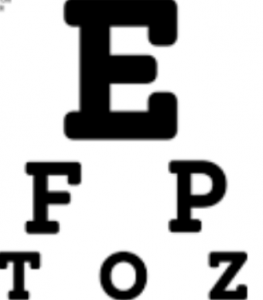C, J, H: My Three “Brogan Words” for 2020, Part 1
Every year, bestselling author and social media visionary Chris Brogan challenges his huge reader base to come up with three words to provide focus for the coming year. This year, I decided to take the challenge for the first time since 2016. And this time, I’m going to emblazon them on a printout in huge type, and post it where I can see my words every day. My three words are:
- Clarity
- Justice
- Healing
Clarity

The year 2020 reminds me of 20/20 vision: seeing with perfect clarity. While I don’t expect to achieve perfect clarity, even with the new glasses I’ve just been prescribed ;-), I do want to focus on seeing and acting as clearly as possible.
It’s been several years since I changed the focus of my business toward helping other businesses (and other types of organizations such as nonprofits) find the sweet spot where profitability intersects with environmental and social good.
I now market myself as the person who can help any organization discover opportunities to do go in the world by creating, identifying and re-purposing, and/or marketing profitable products and services that turn hunger and poverty into abundance, war into peace, and catastrophic climate change into planetary balance.
I’ve gotten a lot clearer in my messaging since starting this quest in the summer of 2013, since giving my TEDx talk in 2014, and even since publishing my 10th book, Guerrilla Marketing to Heal the World, in 2016 (which Chris Brogan endorsed, along with Seth Godin, Jack Canfield, and many others).
But I’m still nowhere near as clear as I need to be about:
- Who wants to pay me to do this work?
- Which services they most want, and to achieve what goals?
- How to set a price structure that’s fair both to solopreneurs and large corporations?
- Who do I most want to serve?
I’m beginning to figure out the answers. I’ve settled on pricing based on the size of the organization, which seems reasonably fair because larger organizations are more complex and therefore a task such as a marketing plan our outlining a product development campaign will take a lot more of my time–but I’m not sure I’ve got all the bugs worked out yet. I’ve realized that I’d rather work with small entities than large ones, but I am very open to being farmed out by a larger entity to their smaller customers, suppliers, or business units–and to the larger entities sponsoring me in other ways, such as funding my speaking to organizations that can’t otherwise afford me.
Hopefully, seeing that message of clarity on the wall of my workspace every day will inspire me to figure all this out, and to make my message so clear that everyone understands exactly how I can help and why it’s important.
I’ll discuss Justice in Part 2 (with lots of links), and Healing–including a deeply personal experience that happened to me this month–in Part 3.

